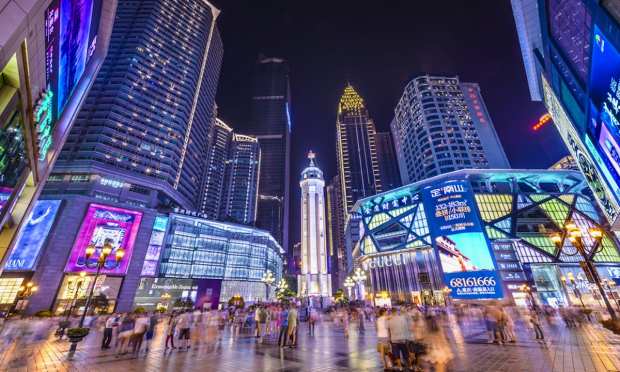Travel Restrictions Boost Chinese Malls

Chinese malls enjoyed a resurgence during the COVID pandemic, with shoppers kept in the country by travel restrictions forced to spend their money at home.
That’s according to The Wall Street Journal, which noted that Chinese consumers spent about $77 billion on luxury goods while traveling abroad in 2019. In 2020, “that spending pattern flipped,” with shoppers in China spending three times as much on luxury goods at home than what they spend overseas.
“With the cessation of almost all international travel, and with Chinese tourists and luxury goods shoppers not as welcomed in the West as before, almost all such sales now transact inside China,” Ronnie Chan, whose Hang Lung Properties owns malls and office buildings in mainland China and Hong Kong, told the Journal.
While some Chinese malls began closing brick-and-mortar operations as early as January of last year, many were reopened by March, leading to a “V-shaped recovery” in the second half of 2020.
As PYMNTS reported last year, luxury goods were among the first purchases Chinese shoppers made following the pandemic. The Paris luxury goods provider LVMH enjoyed a 65 percent spike in sales from China in the second quarter of 2020 compared to the same period the year before. Luxury retailer Kering, another Parisian company, saw a 40 percent hike.
That consumer confidence has not gone away. Retail sales rose by 34 percent in the first quarter of 2021 compared to last year, while ground-floor mall rents grew 0.2 percent from the previous year. “People are lining up outside Chanel and Louis Vuitton for limited-edition things,” said Claire Thielke, managing director at Hines Asia Pacific, after visiting Shanghai and Shenzhen. “That’s 100 percent back.” Thielke told the newspaper that retail sales at Hines’ office and shopping complex in Shanghai have surpassed pre-pandemic levels.
This news follows a report from March that retail sales increased in the first two months of the year, rising 33.8 percent, exceeding the predicted 32 percent increase, according to China’s NBS (National Bureau of Statistics).